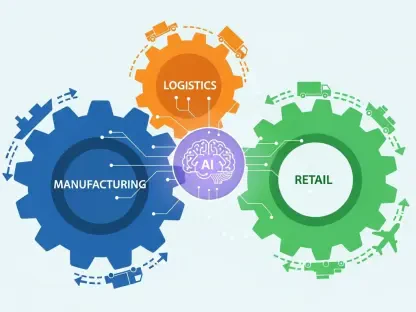In a world where artificial intelligence can seamlessly fabricate videos and audio that appear startlingly authentic, the emergence of deepfakes—synthetic media crafted to mislead—has become a pressing concern across the United States. Washington State and Pennsylvania have taken decisive action with new legislation to combat the malicious use of this technology. These laws, enacted this year, seek to protect individuals from fraud, harassment, and severe privacy violations while carefully navigating the complex terrain of free expression. By addressing the darker side of AI-generated content, both states are setting a precedent for accountability in the digital age. This article explores the specifics of these groundbreaking regulations, their alignment with broader national efforts to curb deepfake harms, and the tangible implications for businesses and individuals alike. As deepfake technology continues to evolve, understanding these legal frameworks becomes essential for navigating the intersection of innovation and responsibility.
Tackling Malicious Deepfakes Head-On
The core of the new legislation in Washington and Pennsylvania centers on curbing the intentional creation and distribution of deepfakes designed to inflict harm. Pennsylvania’s Act 35, effective since September 5, imposes strict penalties for using deepfakes in acts of fraud, coercion, or deception, with fines ranging from $1,500 to $15,000 and potential jail time of up to seven years for severe offenses. Similarly, Washington’s House Bill 1205, effective from July 27, classifies such violations as gross misdemeanors, carrying fines up to $5,000 and nearly a year in jail, with escalated consequences for cases involving identity theft or financial scams. Both states prioritize safeguarding individual privacy and maintaining public trust, particularly in sensitive contexts like elections where deepfakes could sway opinions or disrupt democratic processes. These measures reflect a targeted approach to address the most damaging applications of AI-generated content without casting too wide a net over benign uses.
Beyond the penalties, the legislation in both states underscores a shared recognition of deepfakes as a tool for significant societal harm if left unchecked. The focus on intent ensures that only those who knowingly exploit this technology for malicious purposes face consequences, rather than accidental creators or unaware sharers. In Pennsylvania, the law specifically addresses vulnerabilities among certain groups, such as older adults, who have been frequent targets of financial scams involving synthetic media. Washington, meanwhile, emphasizes protecting personal identities from being weaponized through forged digital likenesses. By honing in on specific abuses like harassment and impersonation, these laws aim to deter bad actors while sending a clear message that the misuse of AI will not be tolerated. This dual-state effort marks a critical step in adapting legal systems to the rapid advancements in technology that can blur the line between reality and fabrication.
Striking a Balance with Free Speech
A defining characteristic of the new deepfake laws in Washington and Pennsylvania is their deliberate effort to balance enforcement with constitutional protections. Both states have incorporated exemptions for content that serves cultural, political, educational, or satirical purposes, ensuring that legitimate creative expression or public discourse is not stifled by overregulation. For instance, a satirical video using AI to mimic a public figure for humor would likely be protected under these provisions, provided it does not cross into malicious intent. Additionally, a defense mechanism exists through visible disclaimers that alert viewers to the fabricated nature of the content, offering a practical way to mitigate potential harm. These safeguards demonstrate a nuanced understanding of the need to preserve First Amendment rights while addressing the risks posed by deceptive media in an era of rampant misinformation.
Equally significant is the protection extended to technology platforms under these laws, which shields them from liability unless they actively facilitate the creation or spread of harmful deepfakes. This provision acknowledges the challenges of policing user-generated content on a massive scale while encouraging platforms to act responsibly by addressing takedown requests promptly. In both states, the emphasis on intent as a key factor in determining guilt further prevents the laws from being wielded against innocent parties or those engaging in harmless experimentation with AI tools. By threading this delicate needle, Washington and Pennsylvania are crafting a model that other jurisdictions might look to when grappling with similar issues. The careful calibration of punishment and protection reflects a broader commitment to fostering innovation without allowing it to become a vehicle for deception or personal ruin.
Aligning with a National Movement
The legislative actions in Washington and Pennsylvania are not isolated but part of a sweeping national trend to regulate deepfake technology across various contexts. Numerous states have already implemented laws targeting specific abuses, such as non-consensual intimate imagery or election interference, while federal initiatives like the TAKE IT DOWN Act, signed into law earlier this year, mandate online platforms to remove harmful content upon victim notification. Other states, such as Tennessee with its ELVIS Act, have expanded protections for voice and likeness against unauthorized AI replication. This collective push reveals a growing consensus on the urgency of addressing deepfake risks while avoiding measures that could hinder technological progress or infringe on individual freedoms. The alignment of state and federal efforts creates a multi-layered framework to combat the multifaceted harms of synthetic media.
This national movement also highlights a shared focus on malicious intent rather than the technology itself, ensuring that enforcement targets bad actors instead of innovators. Washington and Pennsylvania’s laws fit seamlessly into this pattern by prioritizing privacy violations and public deception over blanket bans on deepfake creation. The federal TAKE IT DOWN Act complements these state measures by adding a layer of accountability for online platforms, which often serve as the primary conduits for harmful content distribution. As more states observe the outcomes of these regulations, there is potential for further harmonization of laws to create a cohesive national strategy. This evolving landscape suggests that while deepfakes pose novel challenges, the legal system is adapting with agility to protect society from their most damaging applications, setting the stage for ongoing refinements over the coming years.
Implications for the Business Sector
For businesses, particularly those in media, entertainment, and AI-driven industries, the new deepfake laws in Washington and Pennsylvania signal a pressing need for proactive compliance measures. Companies are encouraged to conduct thorough audits of AI-generated content to ensure alignment with legal standards, alongside training employees to recognize and report potential misuse of synthetic media. Establishing robust takedown procedures for flagged content is also critical, as is securing explicit consent when using digital likenesses in marketing or other applications. High-risk sectors, such as those dealing with public-facing AI tools, should consider integrating clear disclaimers to inform audiences of fabricated content, thereby reducing legal exposure. These steps are essential for navigating the tightened regulatory environment and avoiding costly penalties or reputational damage.
Moreover, these laws offer a silver lining for businesses by providing mechanisms to protect corporate leaders and brands from deceptive deepfake attacks, which have become an increasing threat. Fraudulent videos impersonating executives to manipulate stock prices or extract sensitive information are a growing concern, and the legal recourse now available can serve as a powerful deterrent. Companies must also revisit contracts with endorsers or influencers to address the use of AI-generated likenesses, ensuring transparency and mutual agreement. By adopting these practices, businesses not only comply with the new regulations but also contribute to a broader culture of accountability in the digital space. As deepfake technology advances, staying ahead of legal requirements will be a key differentiator for companies aiming to maintain trust and integrity in their operations.
Safeguarding Individual Rights
For everyday individuals, the deepfake regulations enacted in Washington and Pennsylvania represent a vital shield against privacy intrusions and financial exploitation. These laws affirm the right to control one’s image and likeness, even when manipulated through AI, empowering victims with legal avenues to seek justice against those who use synthetic media for harm. Whether it’s a forged video designed to humiliate or a scam targeting personal finances, the penalties outlined in these statutes provide a tangible deterrent. This protection is especially crucial in an age where digital content can spread virally, amplifying the damage of malicious deepfakes before victims have a chance to respond. By prioritizing individual privacy and security, these laws address some of the most personal and devastating impacts of unchecked AI technology.
However, the implementation of these protections is not without complexity, as defenses such as disclaimers and exemptions for public interest content introduce gray areas in enforcement. Distinguishing between harmful intent and protected expression can be challenging, particularly in the fast-paced, often anonymous online environment where deepfakes proliferate. For individuals, this means that while legal recourse exists, identifying and reporting offending content remains a reactive process that may not always prevent initial harm. The nuances of these laws underscore the importance of public awareness and education on recognizing synthetic media, as well as the need for ongoing legislative adjustments to close enforcement gaps. As these regulations take root, they lay a foundation for stronger individual safeguards, even as the digital landscape continues to evolve at a relentless pace.
Reflecting on a Path Forward
Looking back, the introduction of deepfake laws in Washington and Pennsylvania marked a pivotal moment in addressing the perils of AI-generated content while preserving essential freedoms. These regulations, enacted with precision, tackled the misuse of synthetic media through targeted penalties and thoughtful exemptions, setting a benchmark for other states to follow. The alignment with national efforts, including federal mandates, demonstrated a unified resolve to protect privacy and public trust from digital deception. For businesses and individuals, the laws provided both challenges and tools to navigate this complex terrain. Moving forward, the focus should shift to enhancing public education on identifying deepfakes and refining enforcement mechanisms to keep pace with technological advancements. Collaboration between lawmakers, tech companies, and communities will be crucial to ensure that the balance between innovation and accountability remains intact, paving the way for a safer digital future.









